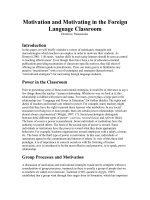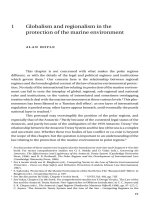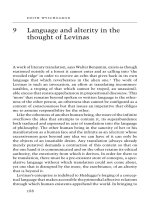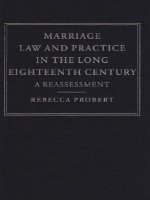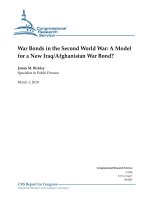Writing Theory and Practice in the Second Language Classroom: A Selected Annotated Bibliography potx
Bạn đang xem bản rút gọn của tài liệu. Xem và tải ngay bản đầy đủ của tài liệu tại đây (275.97 KB, 42 trang )
Writing Theory and
Practice in the Second
Language Classroom: A
Selected Annotated
Bibliography
Torild Homstad &
Helga Thorson
for 1993-94 Grant Recipients
Karen Grimstad and Ray Wakefield
Professors, Department of German, Scandinavian, and Dutch
Technical Report Series
No. 8
♦
1994
Lillian Bridwell-Bowles,
Series Editor
Writing Theory and
Practice in the Second
Language Classroom: A
Selected Annotated
Bibliography
Torild Homstad &
Helga Thorson
for 1993-94 Grant Recipients
Karen Grimstad and Ray Wakefield
Professors, Department of German, Scandinavian, and Dutch
Technical Report Series
No. 8
♦
1994
Lillian Bridwell-Bowles, Series Editor
Mark Olson, Editor
T
HE
C
ENTER FOR
I
NTERDISCIPLINARY
S
TUDIES OF
W
RITING
UNIVERSITY OF MINNESOTA
227 LIND
H
ALL
207 CHURCH
S
TREET
S.E.
M
INNEAPOLIS, MN 55455
Director: Lillian Bridwell-Bowles, Associate Professor, English
Research Assistants: Elaine Cullen, Kathleen Sheerin Devore, Michael Kuhne,
Kimberly Lynch, Pamela Olano, Mark Olson
Policy Council: Terence Collins, Professor, General College; Jeffrey Derby,
Assistant Professor, Chemical Engineering, Institute of
Technology; Emily Hoover, Associate Professor,
Horticultural Science; Gerald Rinehart, Director of
Undergraduate Studies, Carlson School of Management;
Ray Wakefield, Associate Professor, German,
Scandinavian, and Dutch.
Faculty Affiliates: Chris Anson, Professor, English, Director of Program in
Composition and Communication; Lisa Albrecht, Associate
Professor, General College; Robert L. Brown, Associate
Professor, English; Ann Hill Duin, Associate Professor,
Rhetoric; Donald Ross, Professor, English; Geoffrey Sirc,
Associate Professor, General College; Billie Wahlstrom,
Professor, Rhetoric.
Copyright © 1994 by The Board of Regents, University of Minnesota
All Rights Reserved
ISBN 1-881221-17-2
The University of Minnesota is committed to the policy that all personnel shall have
equal access to its programs, facilities, and employment without regard to race, color,
creed, religion, national origin, sex, age, marital status, disability, public assistance status,
veteran status, or sexual orientation.
Preface
In the 1993-94 academic year, members of the Department of German,
Scandinavian, and Dutch embarked on a Center-sponsored research project investigating
the role of writing in second language acquisition. As Torild Homstad and Helga Thorson
point out in their introduction to this bibliography, writing has long been considered a
“support skill” for learning grammar in foreign language instruction. Their research
looked beyond traditional writing practices in second language acquisition for new
instructional possibilities.
One aspect of the project was to search current literature in composition studies,
foreign language instruction, and English as a Second Language. Their annotations show
that a number of theorists and practitioners in second language instruction are pushing the
boundaries of standard language instruction practices by adapting methods familiar to
composition studies. For example, foreign language instructors are stressing the
“process” approach to writing using and “writing-to-learn” strategies.
Homstad and Thorson offer a particularly helpful introduction to the wide range of
opinions and practices concerning writing among foreign language instructors. For those
engaged in foreign language and English as a Second Language instruction, the
bibliography annotates articles concerned with both theoretical and practical aspects of
writing instruction. The bibliography is also helpful for introducing composition theorists
and practitioners to new sites for thinking about literacy.
The Center for Interdisciplinary Studies of Writing annually funds research projects
by University of Minnesota faculty to study any of the following topics:
• characteristics of writing across the University’s curriculum;
• status reports on students’ writing ability at the University;
• the connections between writing and learning in all fields;
• the characteristics of writing beyond the academy;
• the effects of ethnicity, race, class, and gender on writing; and
• curricular reform through writing.
We publish informal reports on the projects, such as this bibliography by Homstad and
Thorson, available in the form of technical reports. More elaborate reports and extended
discussions of Center grant recipients’ works are available through our monograph series.
One of the Center’s goals is to disseminate the results of these research projects as
broadly as possible within the University community and on a national level. We
encourage discussion of Torild Homstad and Helga Thorson’s annotations and
interpretations of the literature currently available on using writing in the foreign
language classroom. We invite you to contact the Center for Interdisciplinary Studies of
Writing for information about other publications or Center activities.
Lillian Bridwell-Bowles, Series Editor
Mark Olson, Editor
September 1994
Writing Theory and Practice in the Second Language Classroom: A Selected
Annotated Bibliography
This annotated bibliography on second language writing provides an overview of
some of the major ideas and resources concerning the role of writing in the second
language classroom. It contains both “hands-on” material directly applicable to the
language classroom and articles, which trace the historical and theoretical development of
writing pedagogy in second language education. The bibliography is part of a grant
funded by the Center for the Interdisciplinary Studies of Writing at the University of
Minnesota to investigate ways in which writing-to-learn activities can most effectively be
used in the foreign language (FL) classroom.
As theories of second language education have evolved from the grammar-
translation to the audio-lingual method to the more communicative approaches that are
commonly used today, ideas about how language proficiency develops and ought to be
taught have also changed. Writing has commonly been viewed as a support skill, used to
reinforce the acquisition of grammar, as in the grammar-translation method, or to support
the memorization of CO1TeCt language structures, as in the audio-lingual method. Until
recently, even the communicative approaches, with their emphasis on oral proficiency,
have tended to de-emphasize writing. But ideas from writing-to-learn, writing across the
curriculum, and writing for academic purposes movements in composition and English as
a Second Language (ESL) have all had an impact on thinking about the place of writing
in second language education.
There is ample evidence to indicate the ineffectiveness of micro-correcting student
writing in developing language competencies. More research needs to be done on how
2
Homstad and Thorson
basic second language literacy can best be developed by those who are already literate in
a first language. Until we know more about how second language students learn to write
correctly, actual classroom practices will be slow to change.
Although the research on writing originally done in composition studies forms the
basis for what is happening in second language writing research, we have, for the most
part, not included these former studies in our bibliography. Most of the current research
in second language writing has been conducted by ESL professionals; however, we also
found many practical articles illustrating the uses of writing in FL, and ESL classrooms.
We have included theoretical and historical articles so teachers can think about their own
vision of language teaching and place it in a theoretical perspective, along with “hands-
on” articles that demonstrate effective uses of writing in actual foreign language classes.
For example, a couple of authors indicate how the appropriate and creative use of word
processing may be a powerful tool in teaching second language writing. However, there
are also those who are still highly skeptical about the importance of writing in foreign
language curriculum; they are represented by three articles in this bibliography.
Much exciting and important work is yet to be done in exploring the relationship
of the four modalities (listening, reading, speaking, and writing) to each other in second
language acquisition, as well as determining the relationship between first and second
language literacy. Our goal in preparing this annotated bibliography has been to learn
more about the theory and practice of writing pedagogy in order to make better use of it
in our own teaching as well as to make these ideas and resources available to our
colleagues. Although research on writing in second language acquisition is a relatively
new field, we found so much exciting material that it was difficult to decide where we
Writing Theory and Practice in the Second Language Classroom 3
should stop adding citations. We hope that our readers will find these resources equally
thought-provoking and inspiring.
4
Homstad and Thorson
Bibliography
Anson, Chris M., et al. Scenarios for Teaching Writing: Contexts for Discussion and
Reflective Practice. Urbana, Illinois: National Council of Teachers of English,
1993.
The authors of this book provide scenarios about various aspects of teaching
writing. Each of the scenarios highlights a specific problem or set of problems that
emerges in composition courses, focusing on both theoretical issues and practical
applications. They are meant to provoke discussion; each scenario is followed by a set of
discussion questions. The authors envision this book as a catalyst for discussion in
graduate teaching seminars, workshops, and teacher training programs. The scenarios are
organized into six sections: 1) creating effective writing assignments; 2) using reading in
writing courses; 3) responding to student writing; 4) teaching grammar and style; 5)
managing discourse in classes, conferences, and small groups; and 6) course designs.
Although the situations have been modified, the scenarios are all “real and current” (x).
They have been collected from actual events and, therefore, deal with common (yet
sensitive) situations that arise in teaching writing. The scenarios vary from suspected
plagiarism to responding to content/accuracy to dealing with disruptive students and
more.
Barnett, Marva A. “Writing as a Process.” The French Review 63.1 (1989): 31-44.
According to Barnett, both students and teachers are commonly frustrated over
the number of errors and the lack of improvement in student writing. In this article, she
looks at how teachers traditionally assign and react to student writing. She claims that
students may become more involved in editing their own work if the teacher does less
Writing Theory and Practice in the Second Language Classroom 5
correcting. She suggests that teachers look at writing as a process, or a series of drafts,
including prewriting, writing, and rewriting. Less attention to correction of grammatical
errors, together with real attention to content, leads ultimately to better student
compositions. Barnett claims that the advantages to both students and the teachers of
process writing and writing for communication include greater quantity, higher student
motivation, and more efficient use of grading time.
Brookes, Arthur, and Peter Grundy. Writing for Study Purposes: A Teacher’ s Guide to
Developing Individual Writing Skills. Cambridge: Cambridge University Press,
1990.
Brookes and Grundy’s approach to teaching writing “combines communicative
practice, an integrated approach and humanistic principles.” For them, communicative
language features six elements: 1) having something meaningful to say, 2) reaching an
audience, 3) working in small groups, 4) working collaboratively, 5) developing register
awareness, and 6) talking naturally. The authors define humanistic principles as
promoting freedom to express one’s self, recognizing the learner as a resource, ensuring
the learner freedom from authority, valuing self-expression as intelligent, recognizing the
centrality of personal discovery, and respecting individual learning styles. Brookes and
Grundy’ s book developed out of teaching “English for Academic Purposes.” As such,
they have worked with more advanced language students. Exercises are long, typically
taking thirty to fifty minutes, though many could be adapted to a much shorter time span.
Almost all of the exercises are based on pair or group work, and outside evaluation is
discouraged. Process writing is stressed—most exercises are based on the language of
argumentation, comparison and contrast, etc., rather than on solving particular
grammatical problems.
6
Homstad and Thorson
Brown, Roger S. “Teaching Writing, or Cooking with Gas on the Back Burner.” Die
Unterrichtspraxis 15.2 (1982): 289-292.
In this article, Roger Brown discusses the role of writing in the second and third
year of college German courses. Although he does not go as far as John Troyanovich,
who claimed that extensive writing is ineffective and “free compositions” are
unproductive (see separate annotation), Brown still maintains that writing must be kept in
its place. His two rules on writing in the FL classroom are 1) keep it short and 2) prime
students before they begin to write. This, according to Brown, includes providing famous
quotations as models to memorize, emulating the stylistics of fables, and discussing false
cognates and deceptive pairs (e.g., das/daβ, Mal/Zeit). One technique that Brown finds
particularly productive is the “Nacherzahlung” (summary). However, he claims that any
extensive independent writing, such as free composition, should be postponed until the
third or fourth years and should be strictly limited.
Although we disagree with the conclusions of this article, we find it interesting in
understanding the resistance many foreign language teachers had (and may still have) to
teaching writing in the foreign language classroom.
Carson, Joan A., and Dona Leki, eds. Reading in the Composition Classroom: Second
Language Perspectives. Boston: Heinle and Heinle, 1993.
This book examines the interrelationship of second language reading and second
language writing. The first section contains articles that provide an historical background
as well as introduce a number of issues concerning the reading/writing relationship.
Barbara Kroll’ s essay, “Teaching Writing IS Teaching Reading: Training the New
Teacher of ESL Composition,” maintains that the composition teacher must know
Writing Theory and Practice in the Second Language Classroom 7
theories of reading in order to successfully teach students to write. The second section
concerns cognitive dimensions, noting that second language research in this area is just
beginning. However, initial research suggests a correlation between reading and writing
ability in second language learning and the transfer of reading/writing skills across
languages. Practical suggestions include establishing mediating links between students
and the academy; devising a sequential, recursive syllabus based on reading and writing;
and finding writing tasks that foster critical thinking and which maximize the students’
interaction with the text. The third section is concerned with the social dimensions of
reading in the composition classroom. According to the editors, it is in the social
dimensions of literacy that pedagogical experimentation has far surpassed formal
research.
Caywood, Cynthia L., and Gillian R. Overing, eds. Teaching Writing: Pedagogy, Gender,
and Equity. Albany, New York: State University of New York Press, 1987.
This anthology focuses on aspects of pedagogy, the relationship between feminist
theories and theories on writing, and notions of equity in the classroom. The individual
authors focus on the theoretical dimensions of gender and writing as well as provide
practical suggestions for classroom activities and models for course design. Several of the
authors maintain that writing as process (rather than as product) is an essential part of an
equitable classroom. The individual authors provide examples of feminist pedagogy and
the teaching of writing. These include discussions of collaborative learning (Stanger),
mothering as a pedagogical model (Daumer and Runze), lowering the affective filter of
writers (Homing), issues of equity and peace in the writing classroom (Prey), writing as a
mode of discovery (Quinn), and the use of journal writing (Perry), among others. The
authors suggest ways of moving away from teacher-centered (extremely hierarchical)
8
Homstad and Thorson
classrooms to an environment that encourages equity, cooperative learning, and student
empowerment.
Conrad, Lynn M., and Susan M. Goldstein. “Student Input and Negotiation of Meaning in
ESL Writing Conferences.” TESOL Quarterly 24.3 (1990): 443-460.
In this study, Goldstein and Conrad examine the discourse used in student-teacher
writing conferences in an advanced ESL composition course and the effects this
discourse had on subsequent revisions of the students’ papers. In particular, the authors
are interested in the extent to which meaning is negotiated in the writing conference and
the role this negotiation plays in successful revisions of the students ‘ drafts. Goldstein
and Conrad conclude that students who negotiate meaning during the conference
demonstrate more successful revisions, whereas students who do not negotiate meaning
are more apt to make only surface-level changes. The authors maintain that writing
conferences do not automatically ensure that negotiation will take place. Therefore, they
suggest that it is necessary for both students and instructors to be aware of the discourse
(i.e., issues of control, importance of input and negotiation, etc.) that takes place in the
writing conference. For example, they suggest that instructors should videotape
themselves during a writing conference in order to understand the complex workings of
discourse. Instructors should also explicitly teach techniques for contributing input and
negotiating meaning so that students can get the most out of their writing conferences.
Dvorak, Trisha. “Writing in the Foreign Language.” Listening, Reading, and Writing:
Analysis and Application. Ed. Barbara H. Wing. Middlebury, Vermont: Northeast
Conference on the Teaching of Foreign Languages, 1986. 145-167.
After defining what “writing” is, Dvorak begins her article with an historical
summary of views on learning to write in a foreign language. She maintains that with the
shift towards audiolingualism, oral language took precedence in the classroom over all
Writing Theory and Practice in the Second Language Classroom 9
other modalities. Writing, when it was used, was mainly for purposes of transcription.
Even with the current shift towards a more communicative view of language, writing is
still not emphasized in most foreign language classes. Dvorak claims that foreign
language textbooks in the last twenty-five years have linked written composition to
advanced grammar or to conversation—rather than focusing on compositional skills such
as organization, clarity, and manipulating various functions (i.e., describing, informing,
persuading). Dvorak also discusses the difference between written and spoken language,
the relationship between writing in a first language and writing in a second language,
how writing fits into Krashen’s language acquisition/learning model, and writing as a
developmental process.
Dvorak draws two important conclusions about writing in a foreign language: 1)
“writing improvements are unrelated to grammar study,” and 2) “intensive correction of
student writing, which has a negative effect on writing in terms of student attitudes and
motivation, has little positive effect at all” (151-152). Dvorak’s final section on
“Implications for Program Design and Classroom Methodology” is particularly useful.
Dvorak discusses the process approach to writing, the instructor’s role as reader rather
than judge, and how to integrate writing into the foreign language program as a whole.
Eisterhold, Joan Carson. “Reading-Writing Connection: Towards a Description for
Second Language Learners.” Second Language Writing: Research Insights for the
Classroom. Ed. Barbara Kroll. Cambridge Applied Linguistics. Cambridge:
Cambridge University Press, 1990. 88-101.
According to Eisterhold, the relationship between first language reading and
writing indicates that better writers tend to be better readers, better writers read more than
poorer writers, and better readers produce more syntactically mature writing than poorer
readers. The question in second language learning is in which direction the skills are
10
Homstad and Thorson
being transferred. The most obvious model is from reading to writing, although some
studies show that writing activities can be useful for improving reading comprehension
and retention of information, in particular. In this directional model, skills acquired in
one modality can be transferred to the other. It appears, though, that this transfer is not
automatic, but only comes as a result of direct instruction. Another hypothesis maintains
that the link between reading and writing is nondirectional and results from a single
underlying proficiency, the cognitive process of constructing meaning. The bidirectional
hypothesis claims that reading and writing are interactive, but also independent. Each of
these models indicates a different relationship between the development of reading and
writing skills, and invites different classroom approaches to the teaching of reading and
writing. This issue is further complicated when we consider the second language learner
who is already literate in a first language. Evidence suggests that after a certain threshold
of language proficiency has been attained, first language literacy may have a positive
effect on the development of second language skills. However, research also indicates
that this transfer of skills is not automatic. Teachers can help their students use their first
language skills in learning a second language by making clear the interrelationship
between reading and writing in both the first and the target language.
Gaudiani, Claire. Teaching Writing in the Foreign Language Curriculum. Washington,
D.C.: Center for Applied Linguistics, 1981.
This is one of the first comprehensive studies on writing in the foreign language
classroom. Gaudiani’s monograph is divided into three sections. In the main section she
provides a detailed summary of how she treats writing in her French composition
courses; in the second section she discusses the importance of writing across the
curriculum; and in the final section (appendix) she provides syllabi, exams, handouts,
Writing Theory and Practice in the Second Language Classroom 11
sample student texts, and sample evaluations. Her text as a whole is informative and
practical. In her introduction she provides much helpful advice on how to treat writing in
the FL classroom. She notes, for example, the importance of teachers writing with their
students, the need to build common goals from the very beginning, and the use of the
foreign language in the class. She also discusses the difference between writing in a
native language and a foreign language. In the main part of her monograph Gaudiani
provides a “hands-on” description of her composition classes including a list of
composition topics, the philosophy behind the classroom dynamics (i.e., the class as a
team), the group editing process (which focuses not only on comprehension and
accuracy, but also prose style, organization, and synthesis), and the evaluation of student
papers. During the second half of the semester, Guadiani begins to put more focus on
prose style and has her students write “pastiches.” She describes all of her assignments in
great detail and shows how she treats vocabulary, grammar, and style analysis in her
classroom. Besides weekly essay writing and re-writing, Guadiani also has her students
keep a journal throughout the semester. Guadiani discusses writing across the curriculum
and the need to demonstrate the important of writing in all subject areas. The detailed
suggestions she provides for teaching writing in the classroom are the most helpful
element of the monograph. Besides the packet of handouts she provides, she also includes
a helpful list of suggestions to teachers to cut down on the paperwork and the time spent
correcting student papers.
Gaudiani, Claire. “Teaching Writing in the Foreign Language Curriculum. “ Strategies
for the Development of Foreign Language and Literature Programs. Ed. Claire
Gaudiani. New York: Modern Language Association of America, 1984. 151-171.
12
Homstad and Thorson
Gaudiani’ s chapter on writing in the FL classroom in her book Strategies for the
Development of Foreign Language & Literature Programs is a shortened adaptation of
her earlier study (1981) described in the entry above.
Gere, Anne Ruggles, ed. Roots in the Sawdust: Writing to Learn across the Disciplines.
Urbana, Illinois: National Council of Teachers of English, 1985.
This book consists of articles from the Puget Sound Writing Program (a site of the
National Writing Project) on writing-to-learn strategies. The book is more practical than
theoretical and focuses on the implementation of writing-to-learn activities in the high
school curriculum. Based on the belief that writing is a means of learning, the articles in
this book suggest writing-to-learn techniques in a wide range of subject areas. These
areas include literature, art, foreign languages, social studies, special education, science,
math, philosophy, and history. Besides these content-specific articles, there are general
articles on the connections between writing and thinking, the benefits of the course
journal, and student comments on writing-to-learn activities. The glossary is especially
helpful; it describes everything from Admit Slips to Writing Groups and provides
instructors with practical suggestions and tools for using writing-to-learn strategies in the
classroom. As all of these articles point out, writing-to-learn activities help students
understand and engage in course material, help students think, and illustrate the various
stages in the process of writing.
Greenia, George. “Computers and Teaching Composition in a Foreign Language.”
Foreign Language Annals 25.1 (1992): 33-46.
The grammar/composition course is, according to Greenia, usually one of the
most traditional courses in the foreign language curricula. In this article, he suggests how
using computers can restructure the composition course in positive ways for both the
Writing Theory and Practice in the Second Language Classroom 13
teacher and the student Greenia begins by providing an overview of the current research
on writing in the foreign language classroom. He then describes how he used computers
in his Spanish composition course. Students were asked to carry out various kinds of
writing tasks on the computer (i.e., essays, homework, peer reviews, dialogue journals,
private journals, and an open bulletin board to encourage communication and interaction
among students. Greenia maintains that using the computer in the composition classroom
allows students to write more frequently, without increasing the instructor’s work load
He describes in great detail how he implemented computer technology into his class and
some of the potential problems and ethical issues that arise with this new form of
technology. Greenia’ s article suggests that computers force language teachers to rethink
what the foreign language course should look like and help us move away from a teacher-
centered classroom towards a communicative community of language learners. We
highly recommend this article to anyone who is thinking about using computers in the FL
classroom.
Greenia, George D. “Why Johnny Can’t Escribir: Composition and the Foreign
Language Curriculum.” ADFL Bulletin 24.1 (1992): 30-37.
Answering the question “why Johnny can’t escribir,” Greenia writes: “Johnny
can’t escribir because we have not trained him to” (30). Greenia maintains that the
intermediate-or advanced-level writing classes for foreign language students usually do
not concentrate on writing. Composition courses end up as either as topics course (i.e.,
focusing on literature or civilization) or as a grammar course. Greenia provides a list of
guidelines that gives writing the attention it deserves in the foreign the language
curriculum:
14
Homstad and Thorson
1) “The writing course should have its own place in the curriculum, but it should not
stand alone as the sole undergraduate writing experience in the second language”
(31);
2) “Writing in the foreign language in itself has not proved an effective vehicle for
learning grammar ” (33);
3) “A foreign language writing course is a valuable language course in and of itself;
it is not a service course to prepare students for something else” (33);
4) “Second-language writing should not be conceived of as primarily a literature
course in another form ” (34);
5) “A focus on writing for exchanging and engaging ideas puts students with varying
language strengths on a more nearly equal footing ” (35);
6) “All discourse generated in a writing class should be public rather than private”
(35); and
7) “A well-developed oral component can enliven the initial exchange of ideas, help
define topics and generally serve as a platform for prewriting activities” (36).
Greenia’ s article summaries the recent research and theory on writing in the foreign
languages, discusses process writing using peer review and coediting, and provides clear
goals for developing writing skills in the foreign language composition course. Another
interesting aspect of Greenia’s article is his brief discussion of the so-called gap between
the beginning language program and third-year composition courses.
Hamp-Lyons, Liz, ed. Assessing Second Language Writing in Academic Contexts.
Writing Research: Multidisciplinary Inquiries into the Nature of Writing Ser.
Norwood. New Jersey: Ablex Publishing Corporation, 1991.
Writing Theory and Practice in the Second Language Classroom 15
This volume, part of the Writing Research Series, focuses on second language
writing assessment. The individual authors discuss both the similarities between L1 and
L2 writing, as well as the unique aspects of second language assessment. They focus on
the history of ESL writing tests and speculate on the future direction of such tests, their
validity, scoring, and assessment. The book is divided into several sections organized
around the following topics: 1) the writer, 2) the task, 3) the reader, 4) relating the
assessment to the academic community, and 5) accountability. In her conclusion, Hamp-
Lyons summarizes each of these areas and discusses issues that need to be further
researched and discussed. This volume provides a summary of theoretical research on
writing assessment and various assessment models, information on scoring and response,
practical suggestions for carrying out writing assessment in ESL programs, as well as
discussions on issues such as cross-cultural academic literacy, the diverse academic
community, and political forces such as the “English Only” movement in the United
States.
Hoel, Torlaug Lφkensgard. “Wergeland og skrivepedagogikk.” (“Wergeland and
Composition Pedagogy”). Norsklaereren 2 (1989): 20-23.
Hoel shows how process-oriented writing exercises can be used to introduce
students to a literary text, to motivate and help them create their own understanding of a
text, and to articulate their own interpretation of a text. She illustrates this process with a
series of actual exercises she used in a class with a long, difficult poem by Henrik
Wergeland, one of Norway’s greatest Romantic poets.
Hoel, Torlaug Lφkensgard. Skrive-pedagogikk pa norsk: Prosessorientert skriving i teori
og praksis (Composition-Pedagogy in Norwegian: Process Writing in Theory
and Practice). Oslo: Landslaget for norskundervisning and I. W. Cappelen
Forlag, 1990.
16
Homstad and Thorson
The book begins with an overview of the major approaches to American process-
writing and pedagogical theory and shows how these theories have been adapted and
developed in their own way in Norway. Hoel offers a theoretical model for process
writing that emphasizes writing as a tool for the discovery and development of ideas. She
raises questions about planning, revision, and special problems connected to the process
of writing itself. Hoel discusses the issues involved in any attempt to change the writing
curriculum in the schools to bring it in line with new research and pedagogical
approaches, especially difficulties with the state examination system. Hoel discusses
response groups and how they function, demonstrating with transcripts from two
Norwegian classrooms. As part of her conclusion, Hoel’s students evaluate their own
experiences of process approach after two years of process-oriented writing. Hoel
believes that it is important to understand the theories behind process writing, and she
presents them clearly, relating theory to its pedagogical implications (and some of the
resulting problems that may arise). She also takes the reader directly into the classroom,
showing the writing process at work. For Hoel, being introduced to process-oriented
pedagogy meant that after twenty years of teaching she had to change not only her
teaching methodologies, but also her perspective on the discipline, language, and the
roles of teacher and student.
Horowitz, Daniel. “Process, Not Product: Less than Meets the Eye.” TESOL Quarterly
20.1 (1986) 141-144.
Horowitz is critical of process-oriented approaches to teaching writing. He claims
that writing multiple drafts will not lead to the ability to write in-class examination essays
quickly and fluently and that this approach does not teach a variety of types of formal
Writing Theory and Practice in the Second Language Classroom 17
writing necessary in an academic setting (reports, annotated bibliographies, etc.).
According to Horowitz, the inductive approach of process writing is suitable only to
some writers and for some purposes; some students are better motivated to write by
external motivators (such as grades) than internal motivators. He suggests that a process-
oriented approach gives students a false impression of their own abilities and how writing
will actually be evaluated outside of the language classroom.
Houpt, Sheri. “Inspiring Creative Writing through Conversation.” Foreign Language
Annals 17.3 (1984): 185-189.
Houpt suggests ways to use classroom conversations as effective “pre-writing”
activities. She advocates a three-step process to writing: 1) in-class conversations, 2) a
written draft, and 3) student editing of her/his own draft. Houpt outlines nine sample
assignments, discussing various topics for in-class conversation and how these lead to
successful writing assignments. This article would be beneficial for FL instructors (at any
level) who are looking for ideas on creating effective writing assignments.
Janopoulos, Michael. “The Relationship of Pleasure Reading and Second Language
Writing Proficiency.” TESOL Quarterly 20.4 (1986): 763-768.
The results of a study of foreign graduate students admitted to Ohio State
University indicate a strong correlation between the amount of L2 pleasure reading and
L2 writing ability .The evidence suggests that proficiency levels for L2 reading and
writing are closely related.
Johns, Ann M. “Written Argumentation for Real Audiences: Suggestions for Teacher
Research and Classroom Practice.” TESOL Quarterly 27.1 (1993): 75-90.
Of all the aspects involved in teaching writing in the second language classroom,
readers’ expectations (i.e., audience) have not been widely researched. In this article, Ann
M. Johns provides a review of what she calls “audience literature” and describes her
18
Homstad and Thorson
research on argumentation and audience in context. Since the majority of her ESL
students are engineering majors, Johns interviewed two engineering professors who were
considered to be successful grant writers. These writers researched the values and
interests of the grant reviewers before submitting their grant proposals. Johns concludes
that, like these professionals, our students need to negotiate the relationship between their
own purposes and the interest and values of real audiences. In the final section of her
article Johns describes an assignment in which her ESL students wrote letters to “real and
known audiences” – the college’ s board of trustees and state legislators – complaining of
the recent increase in student fees.
Krashen, Stephen D. “Writing: Research, Theory, and Applications.” Language Teaching
Methodology Ser. Oxford: Pergamon Institute of English, 1984.
In this book, Krashen discusses the research and theories on writing and their
applications to pedagogy. He begins by summarizing the research on writing in several
areas organized around the following questions: “1) Does reading help develop writing
ability? 2) Does writing practice help develop writing ability? 3) Can writing be
deliberately taught? 4) Do good writers go about the act of writing differently from poor
writers? and, 5) Do good writers have different concerns in writing?”(2). Krashen
concludes that increasing the time spent reading can help improve writing even more than
frequent writing. By analyzing these conclusions in relation to his discussions on
language acquisition and learning, Krashen states that comprehensible input (i.e.,
reading) is an important part of writing acquisition. Krashen suggests that “good” writers
consider writing a process, have low affective filters, are aware of their audience (i.e., use
reader-based prose), and concentrate (at least initially) on content rather than accuracy.
Krashen argues that concerns for grammar should only appear at the final stage of the
Writing Theory and Practice in the Second Language Classroom 19
composing process – editing. Krashen also includes an appendix in which he discusses
writing in the second language, but this section is brief and uninformative. He states that
very little is known about writing in a second language, but that similarities are sure to
exist between writing in the student’s native language and second language. Similar to
composition courses taught in the native language, Krashen calls for two important
pedagogical techniques: 1) increased reading for the acquisition of written language and
2) writing practice in order to develop a process approach to writing.
Kroll, Barbara, ed. Second Language Writing: Research Insights for the Classroom.
Cambridge Applied Linguistics. Cambridge: Cambridge University Press, 1990.
This volume in second language writing contains thirteen essays divided into two
major sections. The first section concerns the philosophical issues underlying second
language writing instruction and contains an historical review of the development of
composition theories and their application to ESL/FL teaching. The second section
describes a number of studies on various aspects of writing. The intention of the book is
to provide an historical theoretical background that teachers and researchers can use in
formulating their own philosophical approaches to the teaching of writing. We found the
first section especially valuable, as the essays challenge teachers to articulate their own
philosophical perspectives on writing and how these perspectives are reflected in their
practices in the classroom. (Several essays from this volume are annotated elsewhere in
this bibliography.)
Lalande, John F. “Reducing Composition Errors: An Experiment “ Foreign Language
Annals 17.2 (1984): 109-117.
This article, originally published in The Modern Language Journal 66 (1982):
140-149, was awarded the Paul Pimsleur Award for research. In this study, Lalande
